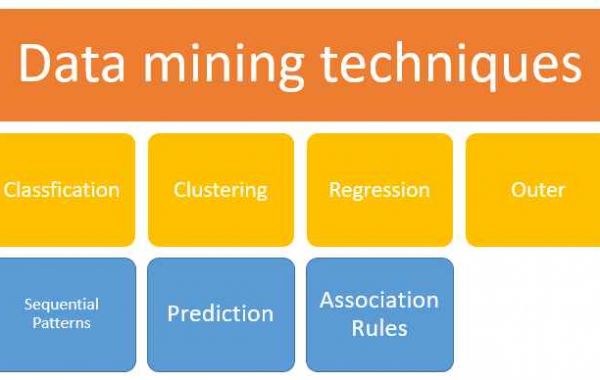The variety of available methodologies for the data mining processes requires the careful study and comparison of each methods advantages and limitations. In this paper, it will be important to compare the main characteristics of three different data mining tools: CRISP-DM method, Six Sigma method, and the DMAIC methodology. At the same time, it will be useful to discuss the opportunities for the realization of these methods for the conditions of the concrete manufacturing company.
CRISP-DM Methodology
The Cross Industry Standard Process for Data Mining (CRISP-DM) is a popular tool for data collection and processing for the modern analysts. Though this method of data mining is quite complex and requires the use of specific data collection methodologies and the presence of specialists with the high level of knowledge (Wirth Hipp, 2013), the advantages of this method are still distinct for the analysts and the companies. First of all, the application of the CRISP-DM method provides substantial benefits for the analysts. It structures the data collection and processing tasks and helps to organize the project (Wirth Hipp, 2013, p.2). The specialists do not have to spend time on the development of the unique data processing strategy, since the common strategies are also present in the methodology of the CRISP-DM. As for the clients that require the data mining services, the use of the CRISP-DM method allows them to clearly understand the definition of the data mining method, the process that is included in the methodology, and the potential outcome that can be expected after the use of this method. In this way, the application of the CRISP-DM method allows both sides of the data mining services to reduce the time spent associated with clarifying the aspects of this process.
The CRISP-DM method is described as a hierarchical process model in Figure 1. Here, it is possible to define the main elements of the CRISP-DM model. Since the analyst achieves the order for data mining, it is divided into phases that describe the complex of actions that are required to obtain the result. The generic tasks, specialized tasks, and process instances demonstrate the different hierarchic levels of actions that have to be realized to obtain the goal. This is the general image of the logical approach to data mining that can be applied to any type of organization.
Figure 2 provides a more careful description of the main phases of the CRISP-DM model. These stages are also universal and can be applied for the tasks of data mining in any type of organization. To define the nature of the CRISP-DM model, it is important to describe the tasks of each phase. The business understanding phase includes the definition of the projects tasks to convert them into the data mining problem that will be solved. The data understanding phase includes the initial data collection and estimation. Here, it is necessary to define whether the data will be useful for the resolution of the specific task. The data preparation stage is created to form the dataset from the initial data for the research. This stage is connected with the modeling phase, where the achieved datasets are reorganized for the aims of the research. The evaluation and deployment are the final and most important elements of the CRISP-DM model, where it is required from the analyst to achieve the most objective and relevant result, and present it in the form that will be clear for the customer. Even if the analyst obtains the highest quality of the result, the failure in its presentation to the client can cause the failure in the practical realization of the data mining conclusions.
The Application of Six Sigma for Manufacturing Organizations
The Six Sigma business management system was developed by Motorola Company in mid-1980s to estimate the degree of the manufacturing processes deviation from perfection level (Angoss, 2014, p.11). This method was later applied in the spheres of business management that are not connected with the creation of the material product. Nevertheless, the aim of this paper is to present the opportunities of Six Sigma method used in the manufacturing organizations.
As a quality measuring tool, Six Sigma method is oriented towards issues of product quality, manufacturing production optimization and defect reduction (Angoss, 2014, p.11). This method is applied to the definition and analysis of defects among the produced goods, the detection of factors that led to the occurrence of the defects, and their removal. The main task of the Six Sigma method is to reduce the range of the possible amount of defective products in the batch (Angoss, 2014, p.12). The image of the complex application of Six Sigma method for the reduction of defects in the manufacturing companies is presented in Figure 3.
From the Figure 3, it is clear that the Six Sigma method is based on the principle of the experimental identification and resolution of the problem. The analyst inside the manufacturing company defines the existence of the problem and the range of the possible amount of defective products in the batch. On the basis of the experts estimation of the production processes, the analyst defines the potential causes of the issue and forms the strategy of their overcoming. After the realization of the plan, the Six Sigma method is used again to estimate the new range of the possible amount of defective products in the batch. The primary task is to minimize the discussed value. Here, the main limitation of this method is that it does not provide the concrete resolution of the defined issue, but only serves for the estimation of each specific solution. In this way, the management of the company may not reach the desired result using only the Six Sigma method.
DMAIC Methodology
Compared to the Six Sigma method of the manufacturing issues resolution, the Define, Measure, Analyze, Improve, and Control (DMAIC) methodology is oriented rather at the determination of the optimum solution to the existing issues than the definition of the issues presence. Thus, the DMAIC methodology is usually considered an integrated part of the Six Sigma method that allows the researchers to solve the problems that could not be overcome with the use of the Six Sigma method exclusively (TTGT Media, 2012, p.14). This is the result-focused method aimed to find the optimum resolution of the production and management limitations that exist inside the company. Compared to Six Sigma method that defines the issues but does not offer the solution, this method provides better support for the companies management.
The DMAIC methodology consists of five main steps for the settlement of the business issues. These steps are mentioned in the name of the method and described in the logical scheme in Figure 4. Therefore, it is pertinent to characterize the elements of each step to clearly define the differences between the DMAIC methodology and the standard Six Sigma method. The stage of the issue definition is more complex compared to the Six Sigma method. Here, it is necessary not just to describe the issue itself, but to determine the reasons that led to its occurrence and the effects that can be caused by this issue for all the companys stakeholders. At the same time, the definition stage is also connected with the identification of the projects goals and the timeframe for competing. As a result, it is possible to say that the DMAIC methodology can be integrated for the variety of tasks, since it provides a higher quality of issue resolution due to the careful study of all elements of the business processes.
Measure stage of the DMAIC methodology is connected with the identification of data that should be used for the study. Here, the DMAIC methodology is rather compared to the CRISP-DM methodology than the Six Sigma method as it ensures a complex approach to the definition of the data sources. The analysis stage of the DMAIC methodology consists in the definition of the potential causes of the issue and the formation of the corresponding hypotheses. The improvement and the control stages of the DMAIC methodology involve the development of the concrete solution of the existing issue. This is the main advantage of the DMAIC methodology compared to the classic Six Sigma method. It does not just define the issue but offers an efficient resolution of it.
The Application of DMAIC for Manufacturing Organizations
The DMAIC methodology can be used for any type of issues inside the modern company. Here, the complex of standard actions has been developed for each element of the presented method (TTGT Media, 2012, p.19-24). For the define stage, it is important to identify problem statement, design high-level process map, gather information about the critical parameters of the companys performance, and develop the communication plan. This will serve as a basis for the resolution of the issue.
For the measure phase, it is essential to define the sources of data, use the process map for the definition of the required data, validate measurement and collection system, and update or revise the project plan according to the changes.
For the analyze phase, it is significant to find and remove the gaps in the previous plan, perform root cause analysis, and determine the potential causes for the occurrence of the issue. In the improvement stage, it is necessary to develop potential improvements, establish evaluation criteria, and implement the upgraded process and metrics.
The control stage of the DMAIC methodology is connected with the definition of the control plan, training of the final performers, the establishment of tracking procedure, and the planning of the projects outcome. In this way, it is possible to say that the DMAIC methodology is the complex and productive approach to the resolution of any types of issues inside the modern organizations.
The discussion of different approaches to data mining for the solution of the existing business issues made it possible to state that each of them has certain similarities with other discussed tools, and includes certain advantages and limitations. In general, the existing data mining methodologies are adapted for the resolution of the majority of issues in the modern organizations.
Read more blogs on https://gold-essays.com/








